About a week since the U.S. Navy embarrassingly lost an F-35C Lighting II Joint Strike Fighter in the South China Sea, all the efforts to recover the jet is still ongoing. The most advanced jet, which crashed into the deck of the aircraft carrier USS Carl Vinson on January 24 and then fell into the water, has injured the pilot and at least six sailors in the crash.
While the pilot managed to eject before the jet fell into the sea, the pilot and two other sailors had to be evacuated to the Philippines for medical care. The crash happened as Vinson (CVN-70) and USS Abraham Lincoln (CVN-72) were operating in the South China Sea. The U.S. 7th Fleet claimed that the “mishap” occurred during take-off from the USS Carl Vinson.
The US$100 million F-35C plane is now lying on the ocean bed, which could be in waters up to 30,000 feet deep depending on the exact location of the jet. It’s still unclear if the entire fighter jet, which is loaded with top classified technology, could be recovered because the aircraft was said to have been broken into debris as it crashed into the sea at high speed.
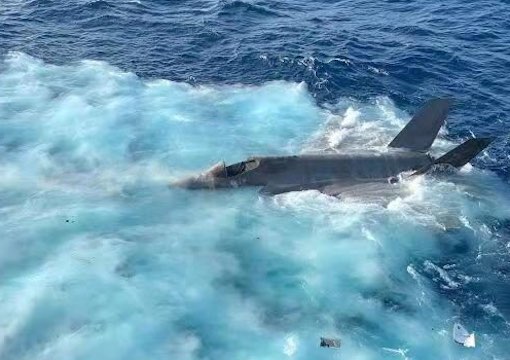
Photos circulating on social media, however, were showing the F-35C landed in the water right side up and largely intact – before sinking. Even though the U.S. Navy has one salvage ship, USNS Salvor (ARS-52), it would take at least 10 days to reach the crash site. However, the black box battery would be dead by then, making it harder to locate the aircraft.
The Japanese Coast Guard has issued a navigation warning that a salvage operation was going on in a northern portion of the South China Sea – roughly 185 miles (298 kilometres) west of the Philippines and 350 miles (563 kilometres) east of Woody Island in the Paracels, a group of man-made islands on which China has built an airbase and other military infrastructure.
It means the Chinese military could be already on its way to get to the jet first, even though Beijing has denied it was interested in the F-35C. Because the China has claimed almost 95% of South China Sea and possessed massive assets nearby, the United States obviously fear that their “flying computer”, which was linked to other assets, could fall into China’s hands.
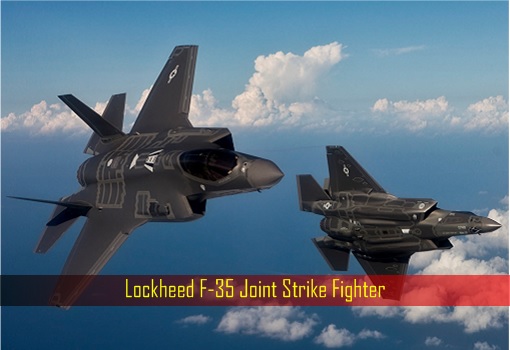
The alternative option is to torpedo the sunken treasure in order to prevent the Chinese military from seeing the F-35C onboard hardware and software. China may have gotten bits and pieces of the aircraft’s technology. But getting access to the actual unit of the U.S. most advanced fighter jet will not only allow China to study and potentially replicate it, but also to find its vulnerabilities.
Salvaging enemy sunken ships and aircraft to access its technology, or to find its vulnerabilities, is a normal practice. When the British submarine HMS Poseidon sank off China’s east coast in 1931, the wreck of one of the British Royal navy’s state-of-the-art ships was secretly retrieved by China in 1972. At that time, China’s nuclear submarine programme was just getting started.
Two years later (1974), in one of the most expensive, complex and secretive intelligence operations during the Cold War, the U.S. Central Intelligence Agency (CIA) spent a whopping US$800 million (US$4 billion today) to salvage the sunken Soviet submarine K-129 from the Pacific Ocean floor near Hawaii. The U.S. wanted to access the Russian nuclear missile and cryptology equipment.
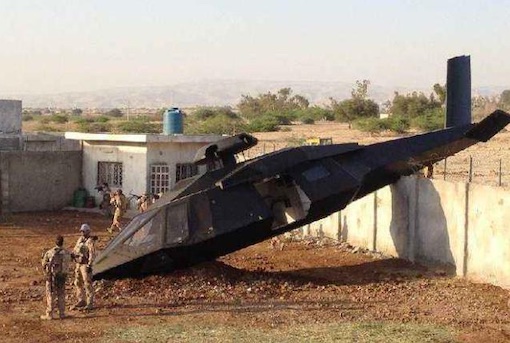
In 2011, despite requests from the CIA, Pakistan went against the U.S. and granted China access to American “stealth” helicopter that crashed during an highly secretive operation to kill terrorist Osama bin Laden. Apparently, during the raid, one of two heavily modified Blackhawk helicopters malfunctioned and crashed. China was said to have taken samples of the “special skin” of the aircraft that evaded Pakistani radar.
This is the not first time that the U.S. had lost its newest and most sophisticated F-35. The F-35 so-called mishap was the fifth major aviation mishap to the Vinson’s carrier strike group in the past two months. Last year (Nov 2021), the U.K., Italy and the U.S. scrambled to salvage a British F-35B that crashed into the Mediterranean following a take-off from the carrier HMS Queen Elizabeth.
Similarly, the Japanese lost an F-35A in the Pacific Ocean in April 2019 after the Lockheed Martin-made fighter jet crashed into the sea, travelling at an estimated speed of 690 mph (1,110 kph). The crash, which killed 41-year-old Major Akinori Hosomi, was blamed on “spatial disorientation” by Japan. The 5th-generation fighter was destroyed and parts and fragments scattered across the sea bottom.
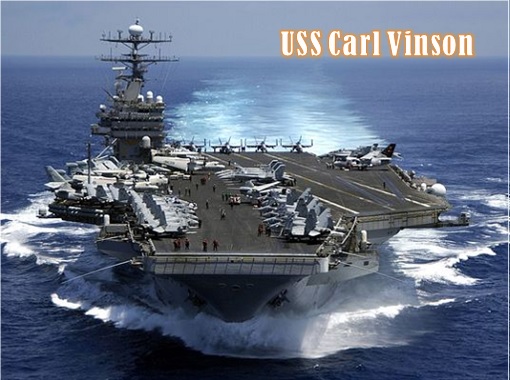
However, the crash aboard Vinson last week is the first-ever crash involving the F-35C stealth fighter plane. The F-35 family includes three variants – the A-variant (F-35A) was designed for the U.S. Air Force and the B-variant (F-35B) entered service with the U.S. Marines Corps in 2015, while the C-variant (F-35C) was specifically for the U.S. Navy.
The Air Force’s F-35A is capable of taking off and landing on standard runways, while the Marine Corps’ F-35B is a short-take-off vertical landing variant that can operate off the Navy’s amphibious assault ships. These two variants are operated by US allies and partners, including Japan, South Korea, the United Kingdom, Australia, Italy, Norway, the Netherlands and Israel.
The F-35C, the newest of the F-35 family, only entered the U.S. Navy service in February 2019. Lockheed Martin claims that the US Navy variant – F-35C – has more robust landing gear for carrier-based operations, folding wings to fit on a packed flight deck and a slightly longer operating range. In total, there has been at least 8 reported accidents or crashes involving the F-35 jets.
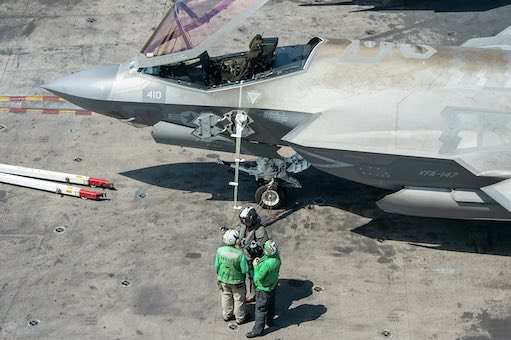
Now, even before the dust settles, photos from the USS Carl Vinson and USS Abraham Lincoln have raised eyebrows. Eagle eyes have apparently noticed something interesting on the two Nimitz-class supercarriers, which carry F-35C fighter jets. The photos, first appeared on the Pentagon’s Defence Visual Information Distribution Service, showed the jets covered in reddish-brown streaks as if they “were rusting”.
Unlike their Air Force’s F-35A, the Navy’s variant’s rust could be due to wear and tear after its highly sensitive radar-absorbent skins are constantly exposed to the harsh saltwater environment. While rust only affects metals like iron or steel, the radar-absorbent materials (RAM) – a closely guarded secret – are believed to consist of iron as one of the ingredients of the coatings in stealth technology.
According to Smithsonian Magazine, the stealth coatings are basically “iron ball” paint containing molecules of carbonyl iron ferrite. F-35’s skin sections are joined in sawtooth or “W” patterns rather than straight lines, to redirect a radar contact. As in the case of previous generations of stealth coatings, the coating could degrade over time. This might cause the brown stains of rust due to oxidation effect.
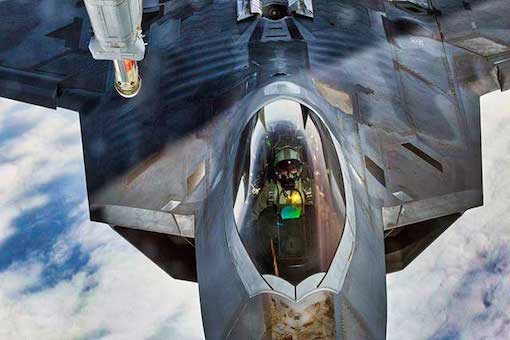
Sure, the Lockheed Martin F-35 has the most advanced stealth coating. But high humidity and heat could accelerate degradation to the F-35C skins after around 6 months at sea. Maintaining radar-absorbent coating on the surface of the F-35 is a tedious and time-consuming work that is a challenge to be carried out on an aircraft carrier itself.
Other Articles That May Interest You …
- Who’s The Copycat Now? – U.S. Next Generation Destroyer DDG(X) Looks Very Much Like China’s Type 055
- U.S. Unlikely To Start A War With Russia Or China – But The Bluffing Game Has Driven Them To Unite Against The U.S.
- China Is Leading The 4th Industrial Revolution Race – And The U.S. Would Be In Trouble If Doesn’t Catch Up
- Damaged Even Before Go To War – How A $3 Billion “Crown Jewel” US Submarine Crashed Into An Undersea Mountain
- President Xi Warns China Will Never Be Bullied – The U.S. Not Impressed China Is Building 120 Nuclear Missile Silos
- China Creates Digital Currency – Here’s Why It’s A Big Deal To The World’s Economy, And A Big Problem For The U.S.
- Economic Destabilization – How China Prepares For American & Japanese Military Interference In Taiwan Conflict
- Trade Surplus Of $535 Billion – Not Even The U.S. Trade War Or Covid Pandemic Can Destroy China Economic Powerhouse
- Five Eyes Alliance Plans To Teach China A Lesson With Economic Sanctions – But It’s Easier Said Than Done
- President Putin Floats The Idea Of A Russia-China Military Alliance, And The U.S. Isn’t Impressed
- After China, Now Russia Declares It’s “Unstoppable” Avangard Hypersonic Weapon Is Ready For War

|
|
February 2nd, 2022 by financetwitter
|


|

|

|

|

|

|









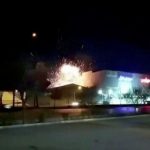


















The colour could just be due to those who can’t use bog paper cleaning themselves on the planes.
The coating would work just as well for stealth, you’ll hear the adversaries of the Yanks screaming “I can’t see sh*t!”
If we get our fighter jet engines back, we could put them back on our airforce, and our patriotic citizens can do the stealth art on the planes for free. Our gomen shouldn’t turn nose up on the offer, it’s a sh*tty job